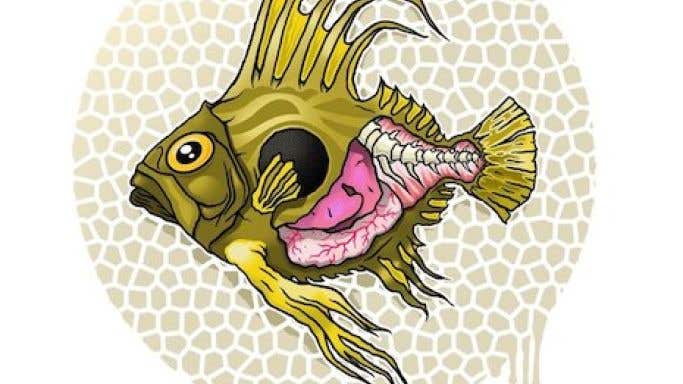A version of this article is published by the Financial Times.
There were five of us round a corner table at Saint Peter, an exciting fish restaurant on Oxford Street in Sydney’s lively Paddington suburb. That number exactly matched the number of first and main courses on the short dinner menu so I promptly ordered one of each for the table. The menu’s portrait of a Saint-Pierre, as it is known in French, or John Dory, as it is more prosaically referred to in English, explained this determinedly piscatorial restaurant’s name.
We subsequently enjoyed a truly first-class meal, enhanced by a geography lesson in the seafood of Australia. Of the first courses, the sardines came from Yamba on the Clarence river; the pippies from Coorong, an ecosystem in South Australia; the albacore tuna from Mooloolaba on the Sunshine Coast; the calamari from Flinders, also in South Australia; while the spanner crab had been caught in Ballina, close to Byron Bay.
Each was as intelligently prepared. The sardines were served raw in Australian thyme oil; the pippies, larger and sweeter than clams, were sautéed in barbecued fennel; the tuna, which had been aged for 16 days, was served raw, diced and alongside some twisted fried crispbread; the calamari had been barbecued and were presented with mint, aubergines and an ink sauce; while the crab meat had been taken out of its shell, mixed with a pale pink, shellfish sauce, and then served back in its shell.
The same creativity was on display with our main courses. Barbecued snap peas with the mahi mahi from Mooloolaba; a delicious combination of sweet and sour radicchio, apples and macadamia nuts with the barbecued bonito from Macleay, close to Sydney; excellent chips with the cleanly fried mirror dory from Bermagui in New South Wales, together with a spicy tartare sauce: and finally two pieces of John Dory wedged together with a piece of this fish’s very rich liver and small chunks of smoked eel. With this we drank a Hutton Chardonnay 2016 Margaret River and a Tapanappa Pinot Noir 2015 Fleurieu Peninsula and paid a bill for five of AU$530 (£308).
The following morning I sat next to the remarkable young man who has been responsible for Saint Peter and all it stands for. Josh Niland is a pale, fresh-faced 29 year old who was initially turned on to fish and cooking while suffering from a cancer that has left him with only one kidney. This happened via a crab fest in his home town of Newcastle in which several leading chefs took part and which lit a flame in an impressionable youth. Niland moved to Sydney aged 17 and went to work for Stephen Hodges at Fish Face and Peter Doyle at Est restaurant before a stint in the UK for Heston Blumenthal and then several months eating around Europe with his wife Julie, the restaurant’s talented pastry chef.
On his return to Sydney, Niland wanted to open a restaurant that served fish only from Australian waters but also served parts of the fish that he believed his customers would enjoy but were for the most part spurned by other chefs. He borrowed the ‘nose to tail’ approach pioneered by Fergus Henderson at St John in London while also using the ageing process of fish to enhance the flavours.
As an example of the maxim that ‘you make your own luck’, Niland struck lucky with this site that had been a sushi restaurant and so, consequently, had all the necessary infrastructure – 3-phase electricity, essential for so much kitchen equipment, extract, grease trap and more – in place. The restaurant, which occupies the ground floor, also has the same footprint upstairs for the office and pastry preparation. As the builders removed the tiling from the walls and dug up the floor, they found the outer brickwork from a 19th-century house and an aggregate floor underneath. Ten acoustic panels, a feature that ought to be compulsory in every restaurant, meant that despite the absence of any absorbent fabric, the restaurant’s acoustics are good. The conversion costs came to AU$ 265,000, money that Niland secured via loans that he has now fully repaid after only 15 months’ trading.
Niland’s working day begins with a text message from Tony Wearne of Nicholas Seafood Traders, whom he describes as ‘my eyes and ears’ at the Sydney Fish Market. This contains a list of all the fish landed and their origin (fish labelled NZ, for example, he does not buy). Then comes the selection of shellfish and others as first courses and more substantial fish for his main courses. One item that Niland will always be looking for is a suitable fish to be served with chips. ‘This is about humility', he explained, ‘and because Saint Peter is first and foremost a fish eatery.’
Then there are the more exciting ways Niland uses fish, of which he says that a recipe exists for everything other than the gall bladder. He has aged Spanish mackerel up to 20 days, the fish taking on more savoury overtones. He uses the smoked bones of a John Dory to add to a fish stock with borlotti beans. And his 16-day-aged tuna was one of the finest dishes I have eaten this year.
Niland has a lot to teach the world’s chefs about fish sourcing and fish cooking as well as the opportunity to provide his future customers with a great deal of pleasure.
Saint Peter 362 Oxford Street, Paddington, NSW; tel +61 2 8937 2530

